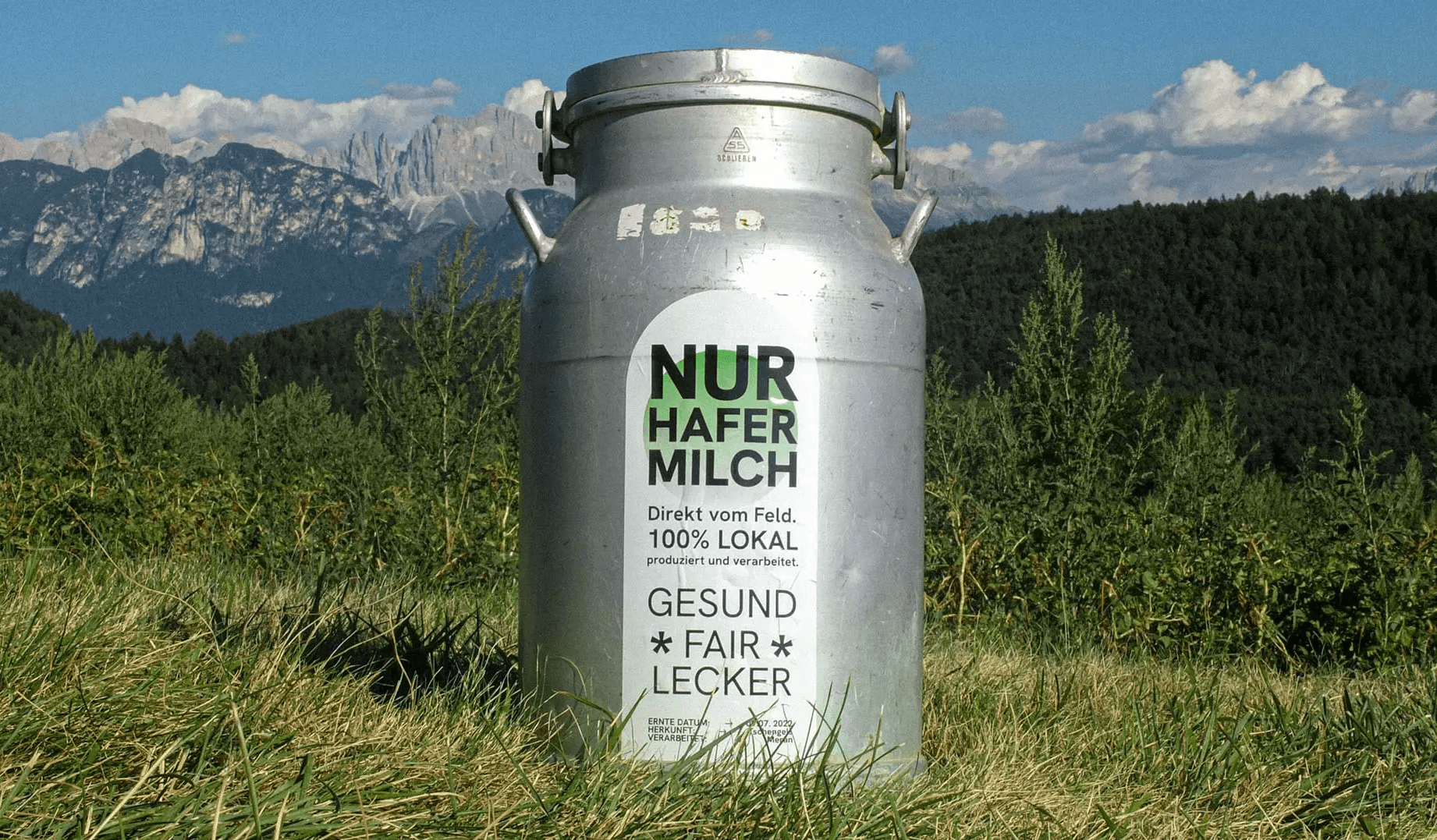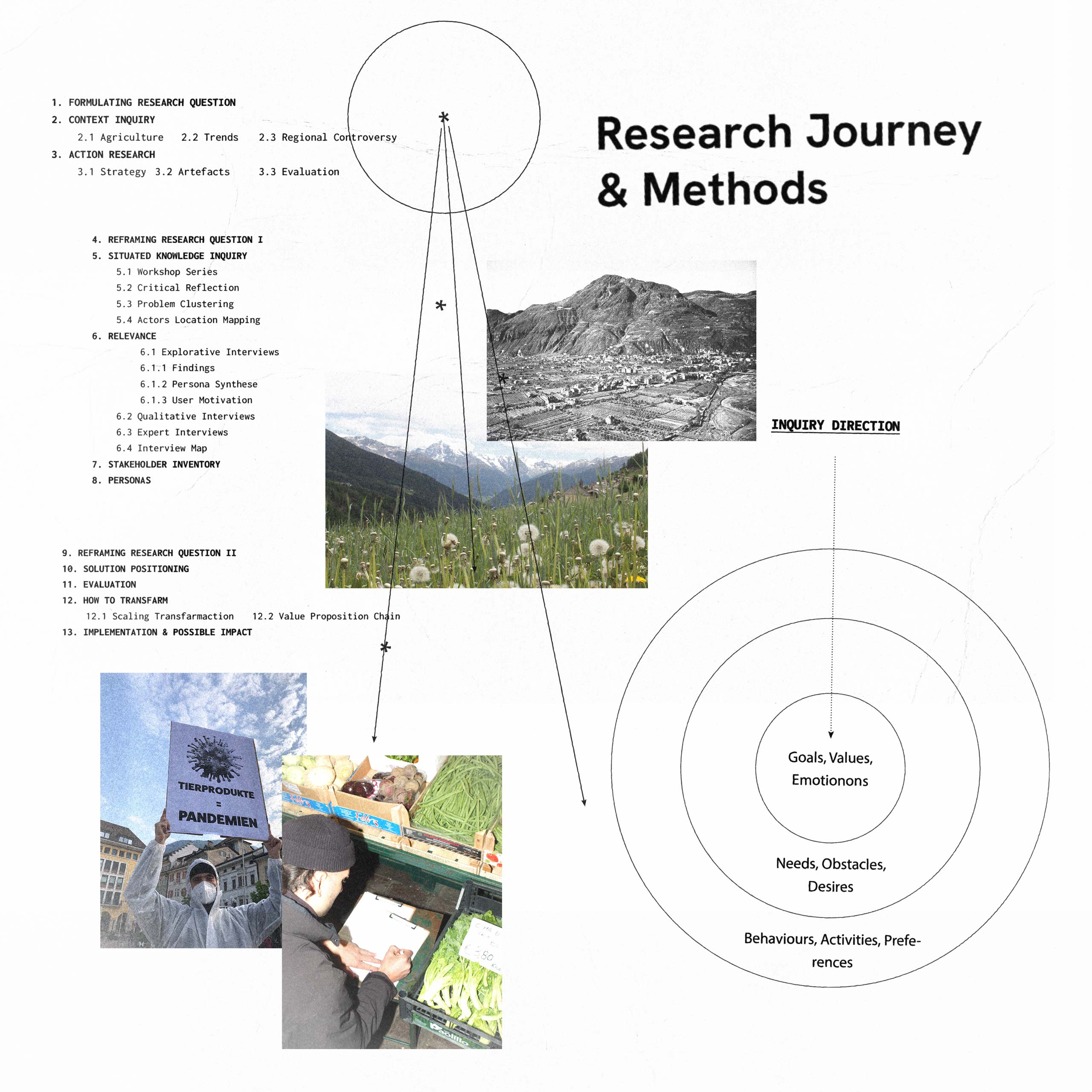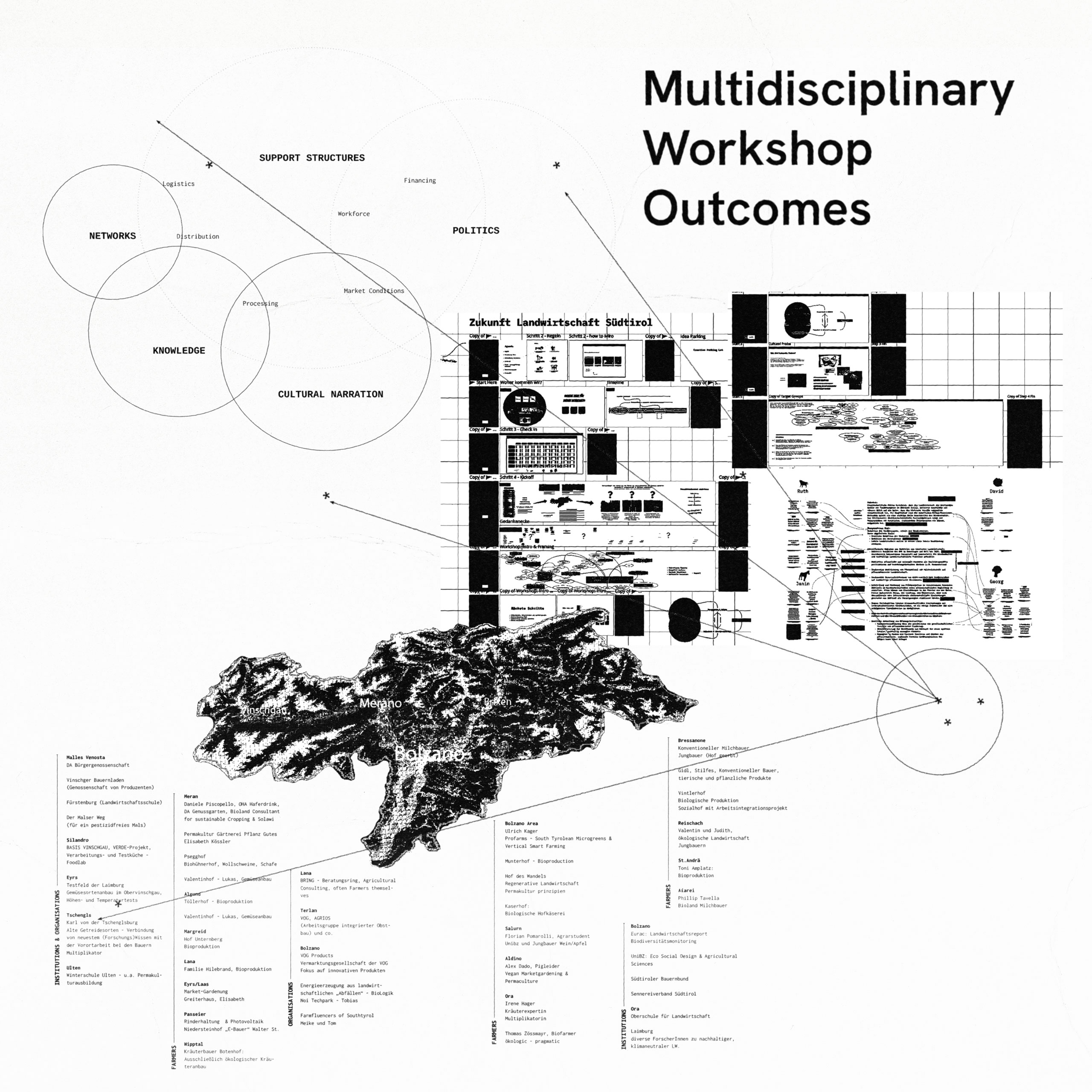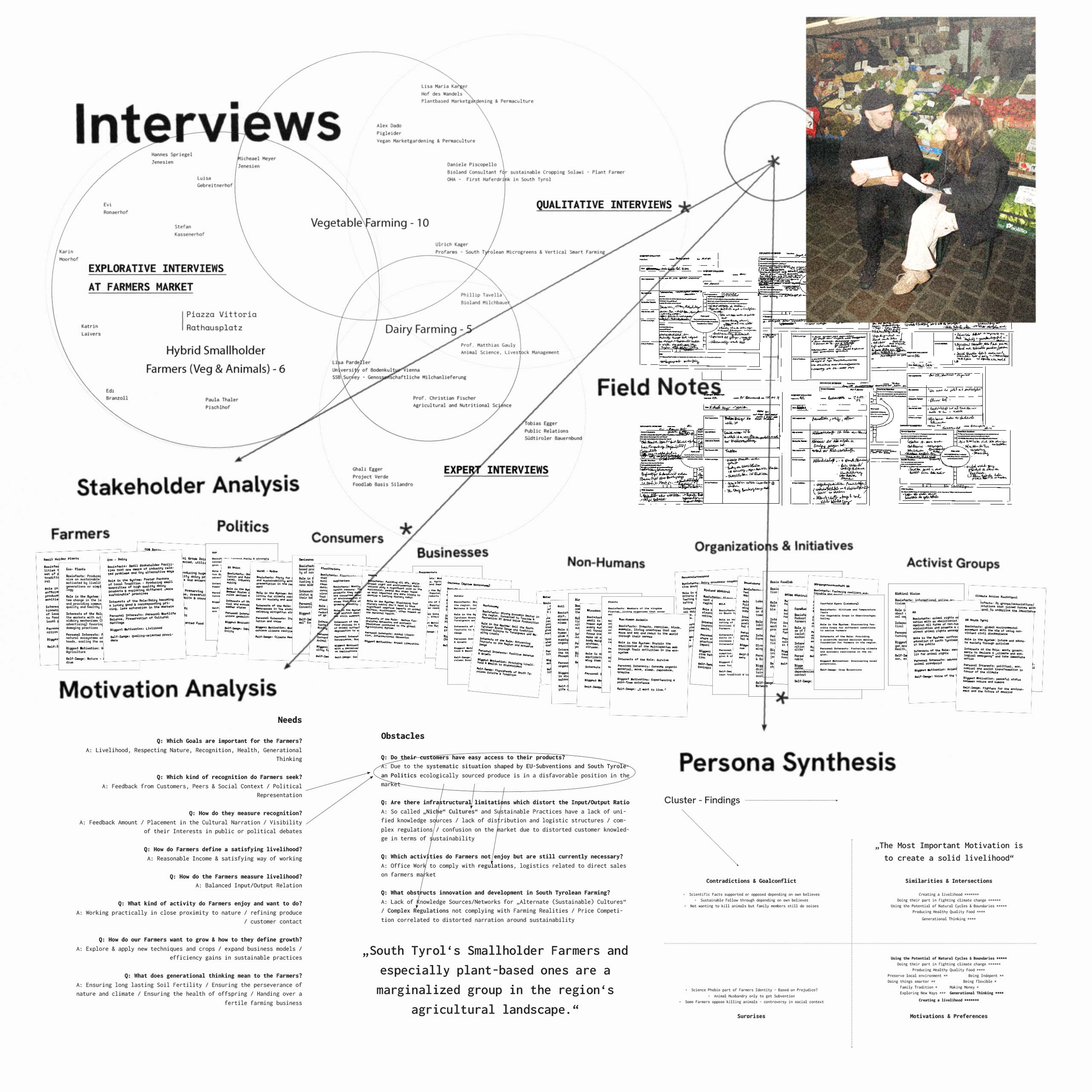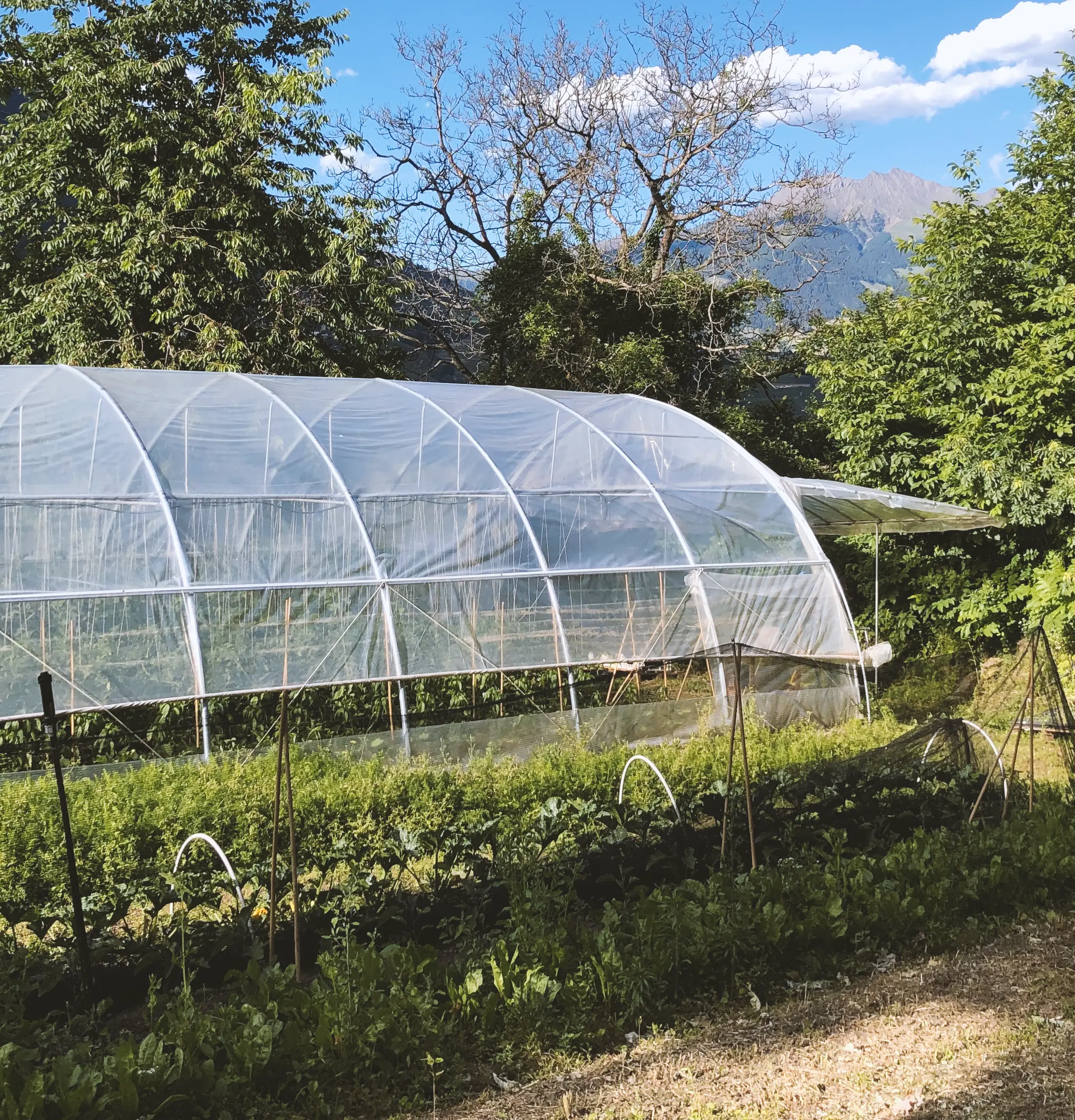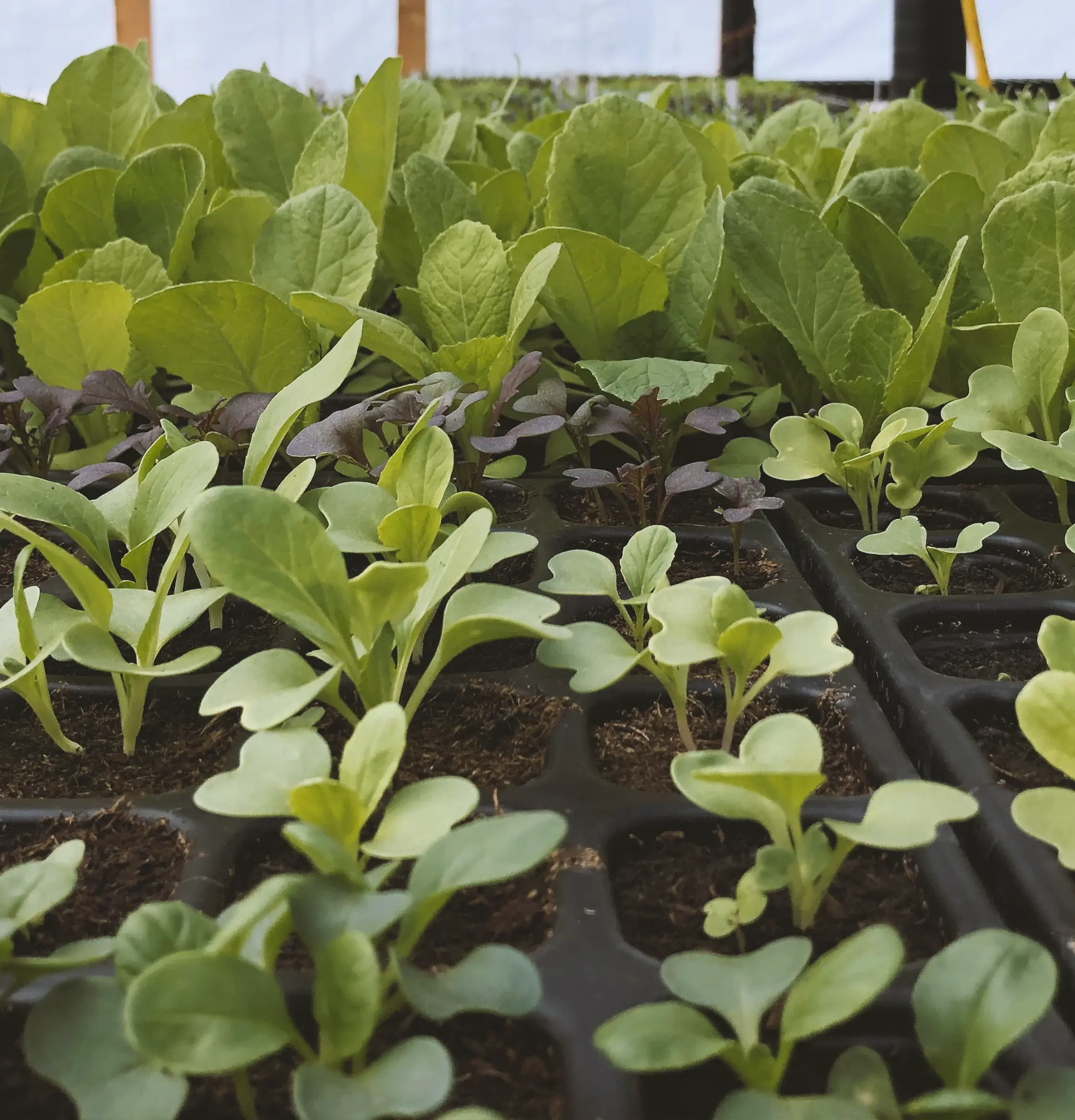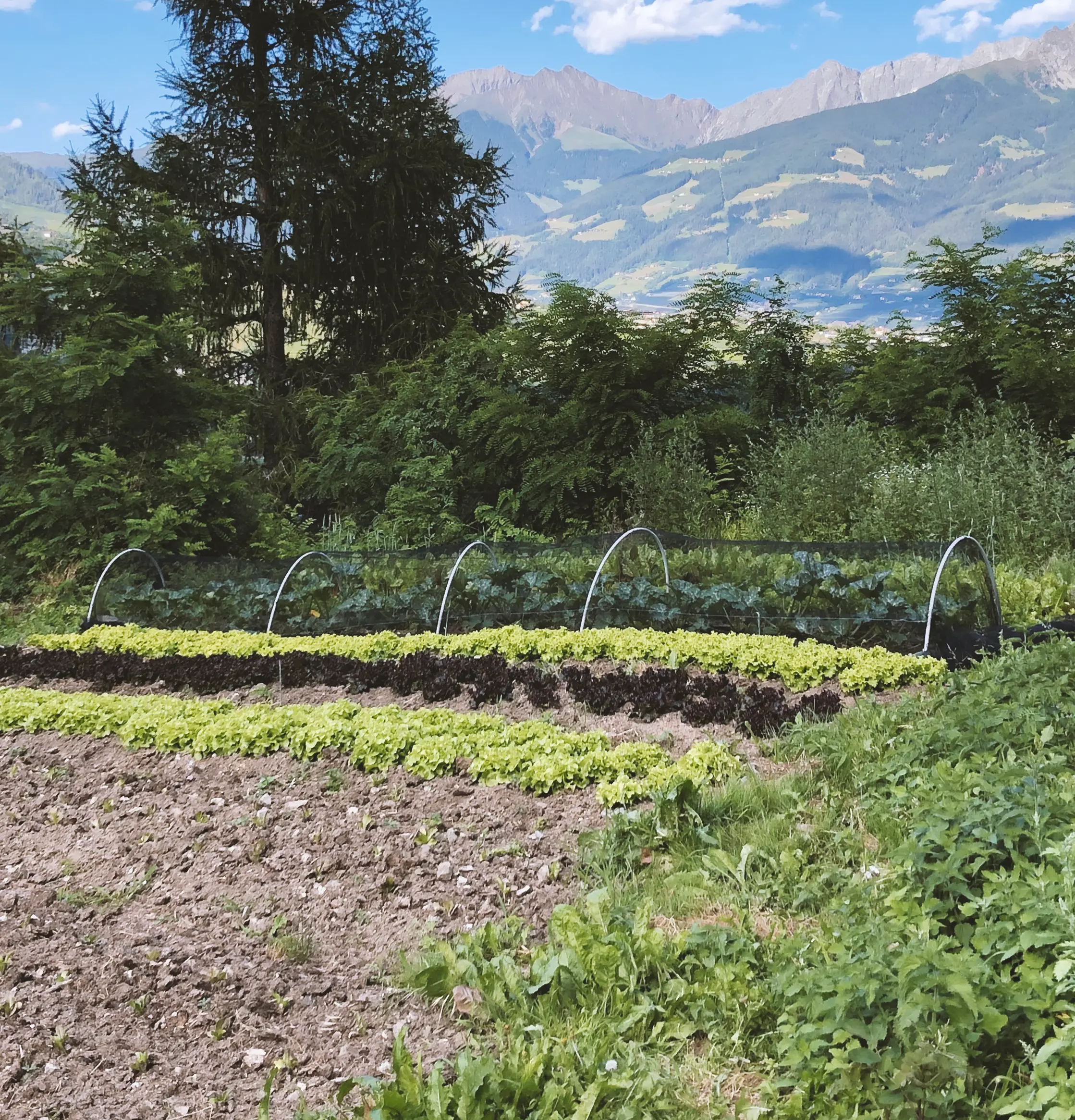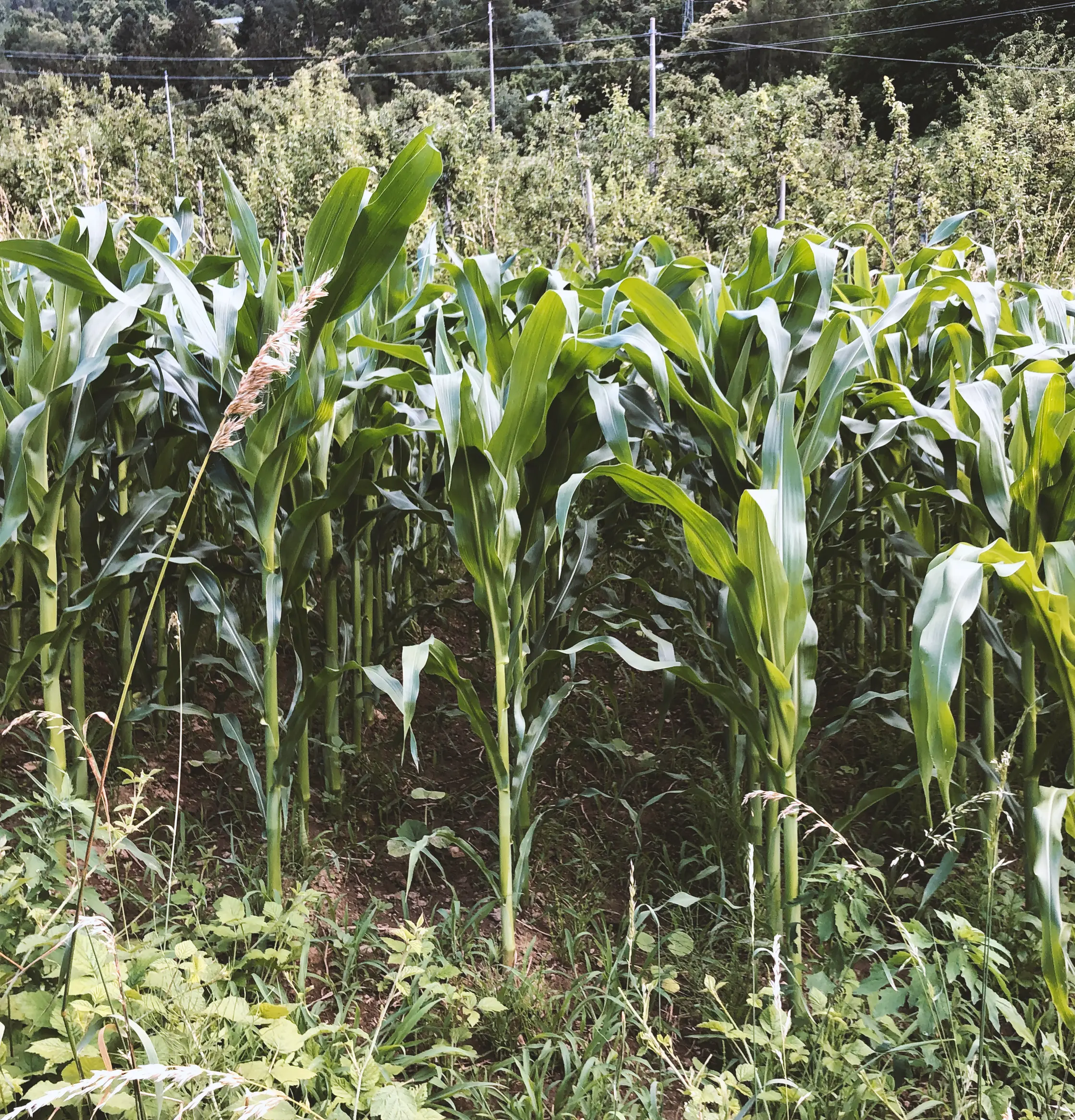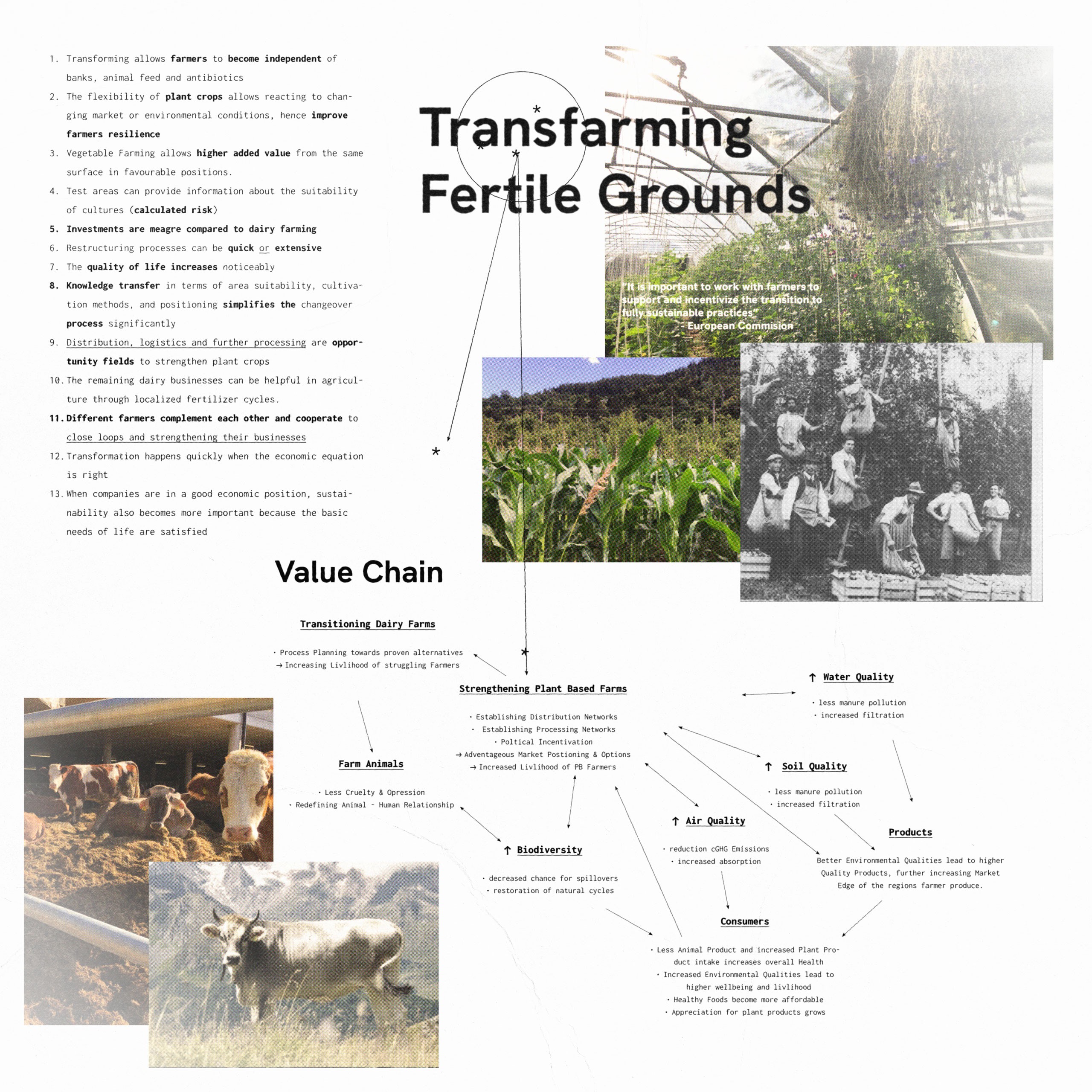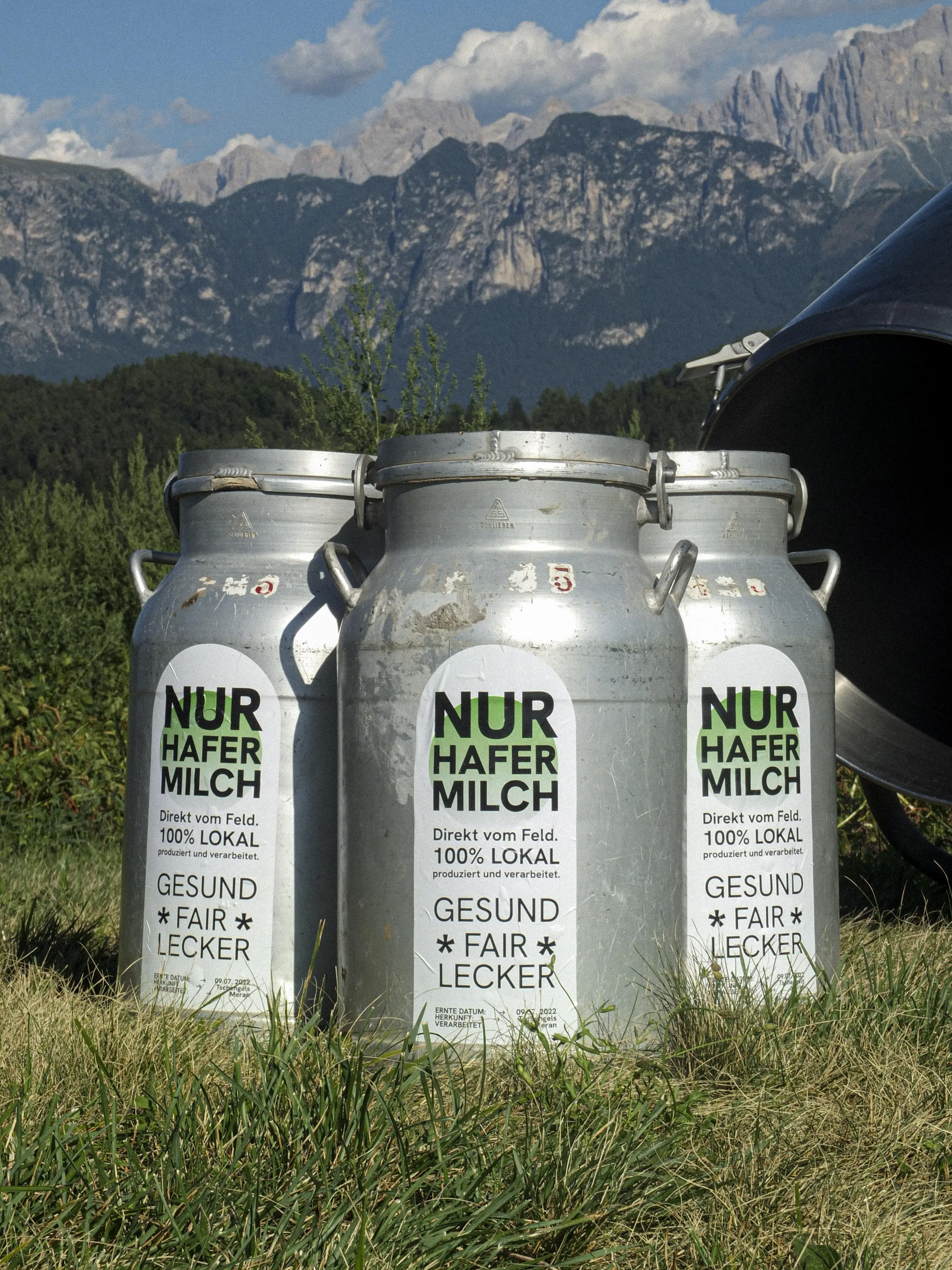[ABSTRACT]
How to liberate fertile grounds in South Tyrolean agriculture? Oversimplified industrial farming policies in the region led to a decline in diversity and traditional knowledge, and fail to account for the realities of many farmers and their families. An extensive multidisciplinary inquiry that stemmed co-created future images.
[COCREATORS]
B Kehm
A van Bezoijen
A Francescini
M Knopp
The megatrend of climate change and increasing global frictions continue to put pressure on regional policies and infrastructures. Signals of systemic vulnerability and fragility are accumulating, prompting a growing number of regional stakeholders to ask for alternatives to the monocultural and intensified status quo.
A research-led, multidisciplinary inquiry and participatory process focused on engaging local stakeholders from agriculture, academia and business to co-create agricultural future images based on situated knowledge, local signals and global trends.
Through interviews with representatives of three different farming categories, we found that the political and economic hegemony of the dairy industry in the regions negatively affects many stakeholders because it does not take into account a diverse set of circumstances.
Contrary to the public discourse on the subject, dairy farming is not so much an ideological issue as a practical one, relying as it does on extensive industrial, political and financial infrastructures.
Dairy (or grassland) farming systems are often portrayed as inevitable in mountain regions, but a closer look reveals a more nuanced truth. The ingenuity of the region's farmers in defying the political hegemony of industrialised farming practices, and the rich history of diversified agriculture in South Tyrol, prove just that.
Proposing dairy systems as a one-size-fits-all solution has huge opportunity costs for the whole region.
To meet ambitious climate and food goals, the region would need to reduce its cattle population to 25,000 (20% of current levels) by 2050. At this level, the region would not be dependent on feed imports or the use of arable land for feedstock, and pollution levels would be significantly reduced. However, such a reduction in livestock numbers is only feasible if farmers and workers are provided with viable alternatives.
A desirable future-image is based on a decisive strengthening of regenerative, diverse and decentralized agriculture. This is a concept that is already flourishing in the interstitial periphery, and the relevant support structures already exist in miniature scale or can utilize repurposed parts of the current system.


